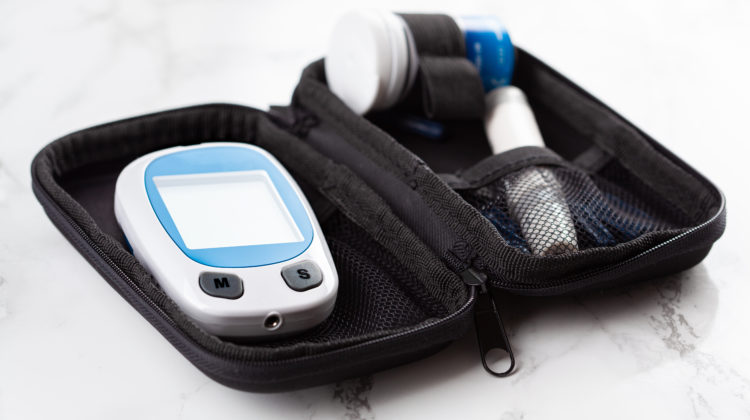
Could cannabis help treat diabetes? Photo courtesy of Envato.
Diabetes is an intricate and complex disease that, according to the U.S. Centers for Disease Control and Prevention (CDC), affects over 34 million people across the country. With such a large proportion of people having the disease, it stands to reason that many diabetics use or have an interest in cannabis. But what risks are associated with cannabis use in diabetics? Furthermore, what sorts of benefits could there be?
Type 1 and Type 2 Diabetes
First things first — there are two types of diabetes: type 1 (T1D) and type 2 (T2D). The first type is diagnosed mostly in children and young adults. T1D occurs when the body destroys pancreas cells, resulting in an inability to produce insulin.
TD2, however, is found more often in older adults, and results from the body gaining a resistance to insulin. The types are similar, but what works for one type of diabetes may not work for the other.
The Risk of Cannabis use for Diabetics
In 2020, the charity Diabetes Canada commissioned a rapid review. Caroline J. Porr, Patricia Rios, and 12 others conducted the review, and collected, screened, and compiled studies on cannabis’ effects on diabetes.
Of the six studies that made the cut, five reported higher HbA1c in type 1 diabetics. HbA1c is used to measure how well blood sugar is controlled, and can be used to diagnose diabetes.
The researchers write, “Akturk et al. (2019) discovered that when adjusting for insulin delivery method, income and age, cannabis users with T1D had a 0.41% higher mean HbA1C level than non-users.”
Considering that 0.8% is the difference between high non-diabetic A1C and what medical experts consider diabetic levels, according to American Diabetes Association (ADA), 0.41% is a significant uptick. Diabetics who use cannabis have routinely higher, less controlled blood sugars, at least according to this study.
In addition, Akturk’s study shed light on the impact of cannabis use on diabetic ketoacidosis (DKA) rates. DKA is “a serious condition that can lead to diabetic coma (passing out for a long time) or even death,” according to the ADA.
Specifically, the study found, those who used cannabis were nearly twice as likely, on average, to develop DKA. As the reviewers put it, “Akturk et al. also reported a statistically significant increased risk of DKA associated with cannabis use […].”
Scientists associate different risks with cannabis use for those with T2D. “Specifically, cannabis users were at a statistically significant risk for peripheral arterial occlusion, myocardial infarction and renal disease,” the authors write. In simple terms, blocked arteries and heart attacks were more common in those diabetics who used cannabis than those who didn’t.
But, the reviewers did not standardize various factors — such as how participants consumed cannabis — across these studies. Sometimes they did not note them at all.
Investigations on Cannabis use for Diabetic Nerve Pain
However, there are still benefits to diabetic cannabis use that are worth exploring. For example, research shows that it may help ease pain from diabetic neuropathy, or nerve damage stemming from the effects of diabetes.
A study conducted in 2016 sought to explore this possibility.
As part of the study, researchers randomly gave 16 participants a low, medium, or high dose of aeresolized cannabis, or a placebo. They gave each participant all possible treatments over the course of four sessions. The participants then self-reported their pain intensity regularly over the next three hours after treatment.
In all cannabis-treatment sessions, the participants reported much lower pain scores on a 10-point scale than when administered the placebo. While the low and medium doses, which contained 1% and 4% THC respectively, had similar reductions in pain — the high dosage, at 7% THC, resulted in much lower pain scores.
Additionally, the researchers write, “… [the] average pain intensity score in the placebo dose was […] 1.2 points higher as compared to the high dose.” On the 10-point scale used, 1.2 points is a significant, and uplifting, change.
For long term pain relief, however, more research is warranted.
Cannabis’ Impact On Diabetes Risk
One would assume, with its famed effect of increasing appetite, cannabis might increase the risk of T2D by encouraging overeating. However, a study conducted by Omayma Alshaarawy and James C. Anthony, published in Epidemiology, showed the opposite.
While the correlation was not quite strong enough to definitively say that smoking cannabis will decrease the risk of diabetes; this research opens up a new line of thinking for both diabetics and non-diabetics.
Results like these also warrant further investigation. Regardless, it is fairly safe to say that smoking cannabis will not significantly increase a non-diabetics’ risk of developing T2D,. That is good news for cannabis fans everywhere.
The Verdict
The world of cannabis use for diabetics, as with most aspects of the disease, is complicated. More research is certainly needed to explore cannabis’ effects on diabetes. For the time being, there are certainly important drawbacks that those with diabetes should consider before using recreational cannabis. Heightened vigilance and responsibility around blood sugar control is surely imperative for those who choose to use it.
Scientists have not yet fully explored the benefits of cannabis products for diabetics. But more research will surely shed light on how cannabis might help.
When it comes down to it, there is no right or wrong answer to whether diabetics should use cannabis. It’s important to keep in mind that there are major risks. But there may also be therapeutic benefits. Weighing one’s personal pros and cons is important, and making an informed decision before using cannabis products is the best course of action.



Leave a Reply